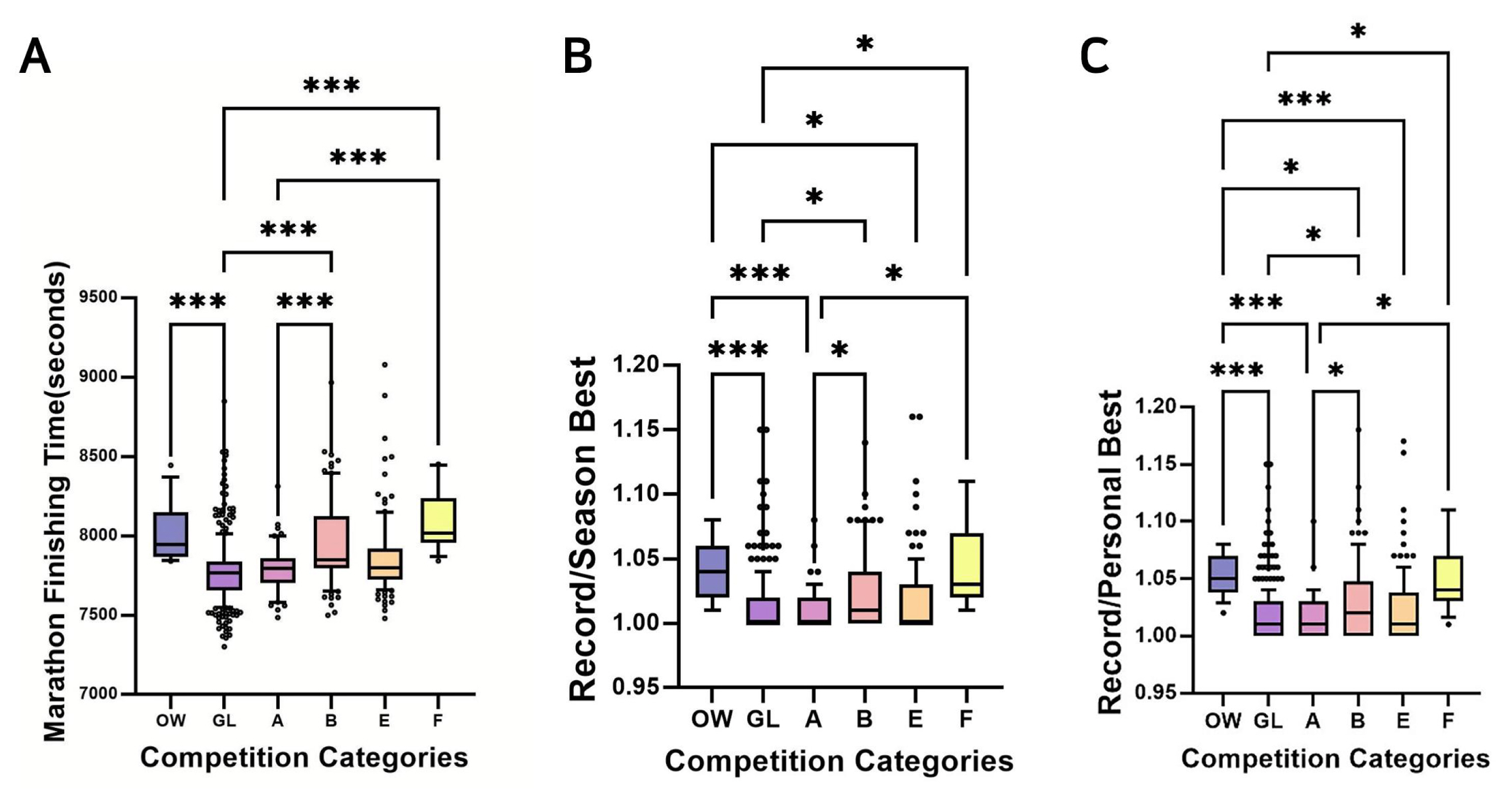Diaz, J. J., Fernandez-Ozcorta, E. J., & Santos-Concejero, J. (2018). The influence of pacing strategy on marathon world records.
European Journal of Sport Science, 18(6), 781-786. DOI:
10.1080/17461391.2918.1450899.


Diaz, J. J., Fernandez-Ozcorta, E. J., Torres, M., & Santos-Concejero, J. (2019). Men vs. women world marathon records’ pacing strategies from 1998 to 2018.
European Journal of Sport Science, 19(10), 1297-1302. DOI:
10.1080/17461391.2019.1596165.


Eichner, E. R. (2015). Top marathon performance: Interesting debate and troubling trends.
Current Sports Medicine Reports, 14(1), 2-3. DOI:
10.1249/JSR.0000000000000115.


Hamstra-Wright, K. L., Coumbe-Lilley, J. E., Kim, H., McFarland, J. A., & Huxel Bliven, K. C. (2013). The influence of training and mental skills preparation on injury incidence and performance in marathon runners.
The Journal of Strength and Conditioning Research, 27(10), 2828-2835. DOI:
10.1519/JSC.0b013e31828a4733.


Hopkins, W. G., Marshall, S. W., Batterham, A. M., & Hanin, J. (2009). Progressive statistics for studies in sports medicine and exercise science.
Medicine & Science in Sports & Exercise, 41(1), 3-12.


Kim, K., Ahn, N., & Hong, C. (2010). Paradigm of marathon coaching science. The Development of Coaching Knowledge, 12(2), 175-184.
Knechtle, B., Di Gangi, S., Rust, C. A., Villiger, E., Rosemann, T., & Nikolaidis, P. T. (2019). The role of weather conditions on running performance in the Boston Marathon from 1972 to 2018.
PLoS One, 14, e0212797 DOI:
10.1371/journal.pone.0212797.



Konings, M. J., & Hettinga, F. J. (2018). The impact of different competitive environments on pacing and performance.
International Journal of Sports Physiology and Performance, 13(6), 701-708. DOI:
10.1123/ijspp.2017-0407.


Maffetone, P. B., Malcata, R., Rivera, I., & Laursen, P. B. (2017). The Boston Marathon versus the World Marathon Majors.
PLoS One, 12, e0184024.



Marc, A., Sedeaud, A., Guillaume, M., Rizk, M., Schipman, J., & Antero-Jacquemin, J. (2014). Marathon progress Demography, morphology and environment.
Korean Journal of Sport Science, 32(6), 524-532. DOI:
10.1080/02640414.2013.835436.

Moir, H. J., Kemp, R., Folkerts, D., Spendiff, O., Pavlidis, C., & Opara, E. (2019). Genes and elite marathon running performance: A systematic review.
Journal of Sports Science and Medicine, 18(3), 559-568. PMID:
31427879.


Noble, B. J., Maresh, C. M., Allison, T. G., & Drash, A. (1979). Cardio-respiratory and perceptual recovery from a marathon run.
Medicine & Science in Sports & Exercise, 11(3), 239-243. PMID:
522633.

Puthucheary, Z., Skipworth, J. R., Rawal, J., Loosemore, M., Van Someren, K., & Montgomery, H. E. (2011). Genetic influences in sport and physical performance.
Sports Medicine, 41, 845-859. DOI:
10.2165/11593200-000000000-00000.


Ryoo, H., Kim, H. J., Jeong, H., Eun, D., & Suh, S. H. (2021). Importance of competition goals in female marathoners.
International Journal of Applied Sports Sciences, 33(2), 186-196. DOI:
10.24985/ijass.2021.33.2.186.


Scheer, V., Valero, D., Villigeer, E., Cruz, J. R. A., Rosemann, T., & Knechtle, B. (2021). The optimal ambient conditions for world record and world class performances at the Berlin Marathon.
Frontiers in Physiology, 12, 654860 DOI:
10.3389/fphys.2021.654860.



Sin, E. L. L., Chow, CN, & Cheung, RTH (2015). Relationship between personal psychological capitals, stress level, and performance in marathon runners.
Hong Kong Physiotherapy Journal, 33(2), 67-72. DOI:
10.1016/j.hkpj.2015.03.002.



Stellingwerf, T. (2012). Case study: Nutrition and training periodization in three elite marathon runners.
International Journal of Sport Nutrition and Exercise Metabolism, 22(5), 392-400. DOI:
10.1123/ijsnem.22.5.392.


Tanaka, K., & Matsuura, Y. (1984). Marathon performance, anaerobic threshold, and onset of blood lactate accumulation.
Journal of Applied Physiology, 57(3), 640-643. DOI:
10.1152/jappl.1984.57.3.640.


Vihma, T. (2010). Effects of weather on the performance of marathon runners.
International Journal of Biometeorology, 54, 297-306. DOI:
10.1007/s00484-009-0280-x.



Wilber, R. L., & Pitsiladis, Y. P. (2012). Kenyan and Ethiopian distance runners: What makes them so good?
International Journal of Sports Physiology and Performance, 7(2), 92-102. DOI:
10.1123/ijspp.7.2.92.


Zouhal, H., Groussard, C., Minter, G., Vincent, S., Cretual, A., Gratas-Delamarche, A., & Noakes, T. D. (2011). Inverse relationship between percentage body weight change and finishing time in 643 forty-two-kilometer marathon runners.
British Journal of Sports Medicine, 45(14), 1101-1105. DOI:
10.1136/bjsm.2010.074641.






 PDF Links
PDF Links PubReader
PubReader ePub Link
ePub Link Full text via DOI
Full text via DOI Download Citation
Download Citation Print
Print





